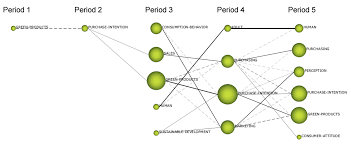In an era where environmental consciousness is becoming increasingly paramount, sustainable fashion is not just a trend but a necessity. The fashion industry, long criticized for its environmental impact, is undergoing a significant transformation. Innovations in sustainable fashion are setting new standards for eco-friendly practices and materials. As we approach 2024, the industry is buzzing with groundbreaking developments aimed at reducing its carbon footprint and promoting ethical practices. This article explores the most exciting sustainable fashion innovations making headlines in 2024.
1. The Evolution of Eco-Friendly Materials

1.1 Recycled and Upcycled Fabrics
Recycling and upcycling have become cornerstone practices in sustainable fashion. Designers are increasingly using recycled polyester, nylon, and cotton to create new garments, reducing the need for virgin materials. In 2024, this trend has gained momentum with more brands incorporating fabrics made from post-consumer waste, such as plastic bottles and discarded textiles. The result is stylish, high-quality garments that help to reduce landfill waste.
1.2 Biodegradable Fabrics
Biodegradable fabrics are another exciting development in sustainable fashion. These materials are designed to break down naturally at the end of their life cycle, minimizing waste and pollution. Innovations in this area include fabrics made from natural fibers like organic cotton, hemp, and bamboo, as well as newer materials like mycelium (mushroom leather) and algal-based textiles. These materials not only offer eco-friendly alternatives but also reduce the environmental impact of fashion.
1.3 Vegan Leather Alternatives
The demand for animal-free leather alternatives continues to rise. In 2024, several innovative vegan leather options are making waves. These include materials made from pineapple leaves (Piñatex), apple peels, and grape skins (Vegea). These alternatives provide a cruelty-free option for consumers while also utilizing agricultural by-products that would otherwise go to waste.
2. Circular Fashion and Waste Reduction
2.1 Closed-Loop Production Systems
Circular fashion is a model designed to keep resources in use for as long as possible, minimizing waste. Closed-loop production systems are a key component of this approach. These systems involve designing garments that can be easily disassembled and recycled at the end of their life cycle. Brands are increasingly adopting these practices, incorporating modular designs and using recyclable or compostable materials to facilitate easier recycling and reuse.
2.2 Fashion Rental and Resale
The rise of fashion rental and resale platforms is a significant development in promoting sustainability. Services like Rent The Runway and ThredUp are gaining popularity, allowing consumers to rent or buy pre-owned clothing. This model not only extends the life cycle of garments but also reduces the demand for new clothing production. In 2024, these platforms are expanding their offerings and improving their sustainability credentials, making them a viable alternative to fast fashion.
2.3 Zero-Waste Design
Zero-waste design is an innovative approach that seeks to eliminate fabric waste during the garment production process. Designers are adopting techniques such as pattern making that maximizes fabric use and creates garments with minimal or no off-cuts. This approach not only reduces waste but also challenges traditional design practices, resulting in unique and creative clothing pieces.
3. Technological Advancements in Sustainable Fashion
3.1 Smart Fabrics and Wearable Technology
Smart fabrics and wearable technology are transforming the fashion industry. Innovations in this space include fabrics embedded with sensors that can monitor environmental conditions, track body metrics, and even adjust their properties based on external stimuli. These advancements not only enhance the functionality of garments but also contribute to sustainability by reducing the need for multiple clothing items.
3.2 3D Printing in Fashion
3D printing technology is revolutionizing fashion design and production. This technology allows designers to create intricate patterns and structures with minimal waste. In 2024, 3D printing is being used to produce custom-fit garments and accessories, reducing the need for mass production and minimizing excess inventory. This approach also enables the use of eco-friendly materials in the printing process.
3.3 AI and Data-Driven Design
Artificial Intelligence (AI) and data analytics are increasingly being used to promote sustainable fashion. AI algorithms can predict fashion trends, optimize supply chains, and reduce overproduction by analyzing consumer preferences and market data. This data-driven approach helps brands make more informed decisions, leading to more sustainable practices and reduced environmental impact.
4. Ethical and Transparent Fashion Practices
4.1 Fair Trade and Ethical Sourcing
Ethical sourcing and fair trade practices are gaining traction in the fashion industry. Brands are increasingly focusing on ensuring that their supply chains are free from exploitative labor practices and that workers are paid fair wages. Certifications like Fair Trade and B Corp are becoming more prevalent, providing consumers with assurance that their purchases support ethical practices.
4.2 Transparency and Traceability
Transparency in fashion is crucial for building consumer trust and promoting sustainability. Many brands are now offering detailed information about the origins of their materials, production processes, and labor practices. Technologies such as blockchain are being used to enhance traceability, allowing consumers to verify the sustainability claims of their favorite brands.
4.3 Consumer Education and Engagement
Educating consumers about the impact of their fashion choices is an important aspect of promoting sustainability. Brands are increasingly engaging with consumers through educational campaigns, workshops, and interactive platforms. By raising awareness about sustainable fashion practices and encouraging responsible consumption, these initiatives help drive positive change in the industry.
5. Future Trends in Sustainable Fashion

5.1 Collaborative Collections
Collaborative collections between fashion brands and environmental organizations are becoming more common. These partnerships aim to raise awareness about sustainability and fund conservation efforts. In 2024, we can expect to see more collaborations that blend high fashion with environmental activism, creating collections that are both stylish and purpose-driven.
5.2 Enhanced Recycling Technologies
Advancements in recycling technologies are set to play a major role in the future of sustainable fashion. Innovations such as chemical recycling, which breaks down textiles into their raw materials, are improving the efficiency and effectiveness of textile recycling processes. These technologies will help close the loop in fashion, ensuring that more garments are recycled and reused.
5.3 Growth of Local and Small-Batch Production
The shift towards local and small-batch production is gaining momentum as a way to reduce the environmental impact of fashion. By focusing on smaller, localized production runs, brands can reduce transportation emissions, minimize waste, and support local economies. This trend is expected to continue growing, with more consumers seeking out locally made and artisanal fashion.
Conclusion
As we move through 2024, sustainable fashion is increasingly becoming a focal point of the industry, driven by innovative materials, technological advancements, and ethical practices. From recycled fabrics and biodegradable materials to cutting-edge technologies and transparent supply chains, the fashion world is embracing change in response to environmental challenges. By staying informed about these developments and supporting brands that prioritize sustainability, consumers can contribute to a more responsible and eco-friendly fashion industry. The future of fashion is bright, with sustainability at its core, paving the way for a more conscious and innovative approach to style.


